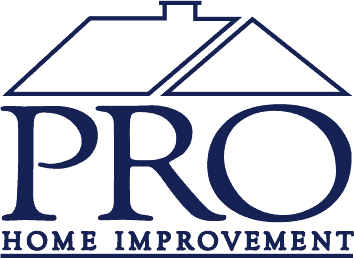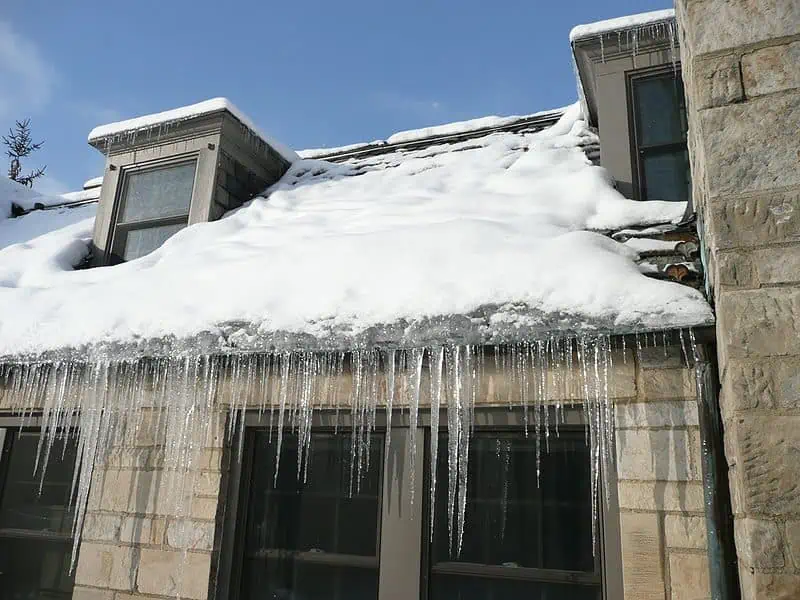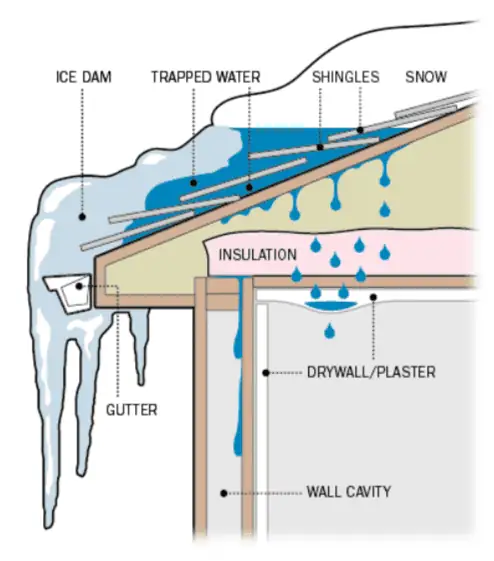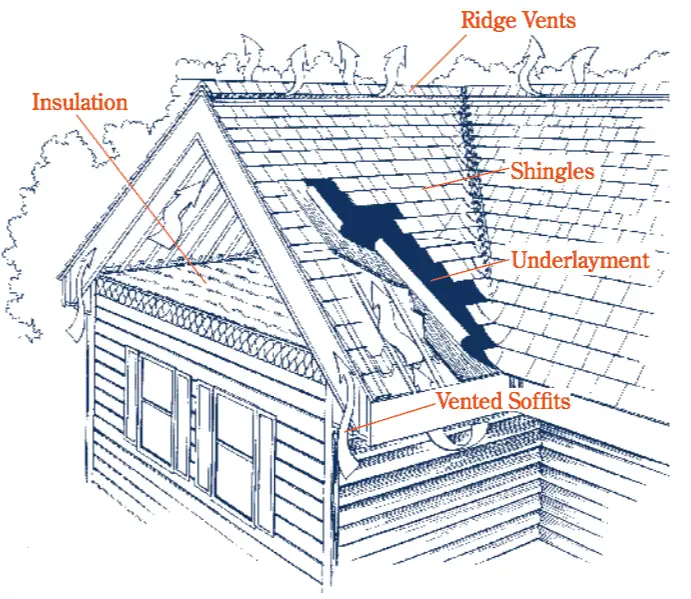What Are Ice Dams?
Ice dams are formed when heat from the inside of a home escapes into the attic and warms the roof decking during the winter. This heat, combined with heat from the sun, can melt snow on the roof. Melting snow on the upper roof and in the valleys then runs down toward the eaves as water. When it reaches the cold eaves and gutters it refreezes. The continual thaw and refreeze process creates ice dams. The result is water backing up under the roof shingles or behind fascia boards where it can soak through the roof decking or wall sheathing, causing damage to attics, ceilings and walls.
Ice Dam Defense
Per the roofing manufacturer, CertainTeed, there are four ways to defend against the damage ice dams cause: insulation, ventilation, waterproofing shingle underlayment and homeowner maintenance. All four work together. Insulation keeps heat from escaping from your home’s living space into your attic. Ventilation removes the heat and helps keep the roof deck evenly cool to help prevent snow from melting on the roof. Waterproofing shingle underlayment is laid across the roof before roof shingles are applied. Finally, homeowner maintenance, to keep snow and ice clear from the roof, so that ice dams will not form.
With existing roofs, a waterproofing shingle underlayment is only an option if you remove the existing shingles or are building a new addition. Regardless, increasing the insulation R-value in the attic is always possible and ventilation can usually be added to your attic easily.
Insulation
An attic insulated to today’s energy standards with insulation minimizes heat escaping through the ceiling, virtually
eliminating the possibility of snow melting and refreezing at the base of the roof. If your home was built before 2000, chances are it needs more attic insulation. The amount of insulation your house should have will vary depending on where you live, how your house is built and many other factors including your lifestyle. Insulation levels are recommended by geographic zones and are stated in R-values. R-value is the resistance to heat flow of a material. The higher the R-value, the greater the insulating power.
Ventilation
The second thing to look for in your attic is the amount of ventilation that you have. It is important to have ventilation in the attic so any heat lost from the interior of the home is drawn up and out of the attic. Adequate attic ventilation will help the roof deck stay cool. Another benefit of having your attic ventilated is that it allows for moisture to escape. Moisture rises into the attic from things such as bathing, cooking and laundry. Unchecked moisture can promote mold, mildew, and wood rot. There are two common ways to ensure that excess moisture or heat can escape to the outside. One way is to use a power or mechanical ventilation system. The other way is through a natural, or static, ventilation system. A power ventilator is an electrically powered fan installed at the roof or gable that runs by a thermostat or humidistat when the attic needs ventilation. Natural or static ventilation systems consist of simple vent or covered openings in your attic. These are typically ridge vents, gable, eave, or roof vents. Many ventilation experts agree that externally baffled ridge vents combined with vented soffits are a very effective method for ventilating an attic.
Where older construction doesn’t permit ridge and soffit ventilation, powered fans can be a good alternative. A properly designed ventilation system must have both intake vents in the soffit or in the eaves at the lower part of the attic, as well as exhaust ventilation, such as ridge vents, high in the attic at or near the ridge. Cooler, dryer outside air typically enters through eave vents near the attic floor, forcing existing moisture-laden or heated air out through vents placed high on the roof or gable. By ensuring proper insulation and ventilation, you will run less risk of the formation of ice dams, and you will substantially reduce the likelihood of damaging your attic components.
Waterproofing Underlayment
If you are building a new home, or re-roofing an older home, you should also insist that waterproofing shingle underlayment be installed before your roof shingles are applied. As mentioned earlier, it is completely resistant to water and, as such, is a critical last line of defense against leaks, preventing backed up water from getting into your home wherever it is applied. Ice and water shield is warranted to prevent water penetration for the warranted life of the new asphalt shingles applied over it). While shingle underlayment does not prevent the formation of ice dams, it will prevent backed up water from getting into the house.
CertainTeed recommends that it be applied:
- Under metal flashing and counter flashing at roof penetrations, side walls, etc.
- In areas where roof pitches change, in valleys and around chimneys.
- Along the eaves and at short cornice projections.
Homeowner Maintenance
Excess snow should be removed by the homeowner. This is considered routine maintenance. If not maintained properly, ice dams can cause serious damage. If damage has already occurred, please contact your insurance company. Most insurance companies will cover damage due to ice dams.
Special Cases
Many new homes feature cathedral or vaulted ceiling roofs and skylights. Both present special cases for insulation. Insulation manufacturers have created a high-performance insulation that is designed specifically for cathedral ceilings to provide higher R-values per inch than standard fiberglass batts. In the case of skylights, quality workmanship and attention to detail are important in preventing ice dams and condensation which often lead to leaks. Applying waterproofing shingle underlayment around the skylight opening is recommended.
Warranty
All shingle manufacturers exclude from warranty coverage leaks caused by water backup behind ice dams, which can form on the eaves of the roof. These leaks can be easily prevented. Proper ventilation will minimize the chances of ice dam formation, and waterproofing shingle underlayment, properly installed, will prevent leaks in spite of ice dam formation and will also prevent leaks from wind-driven rain.



